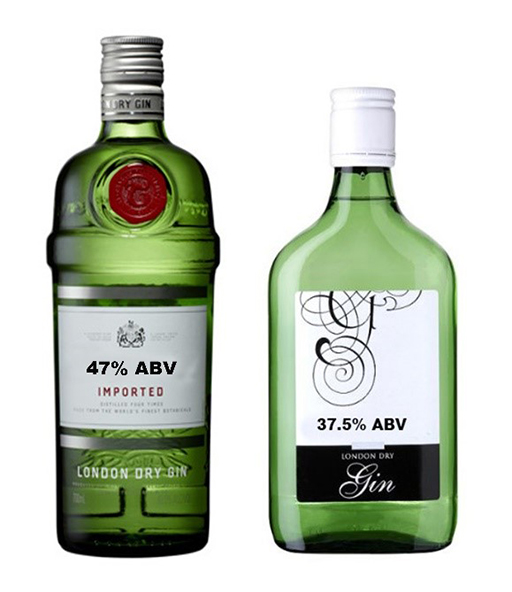1.1 Measuring alcoholic strength
Different brands of alcoholic beverages can also be distinguished from each other on the basis of their alcoholic strength. Consider the two bottles of gin shown in Figure 2.
The bottle of gin on the left is labelled as 47% ABV whereas the one on the right is labelled 37.5% ABV. But what do these numbers mean in reality?
Measuring the alcohol content of your drink is one of the most important analytical measurements made on all alcohol which is intended to be sold, as duty is imposed on alcohol content. In the European Union, the strength of alcohol is expressed as ‘alcohol by volume’ or ‘ABV’ on alcohol packaging. So, looking again at Figure 2, it is clear that the gin on the left has a higher alcohol content than the gin on the right, and you are likely to pay more for this particular gin.
All drinks with an alcoholic strength of more than 1.2% ABV must be labelled with an indication of alcoholic strength by volume.

